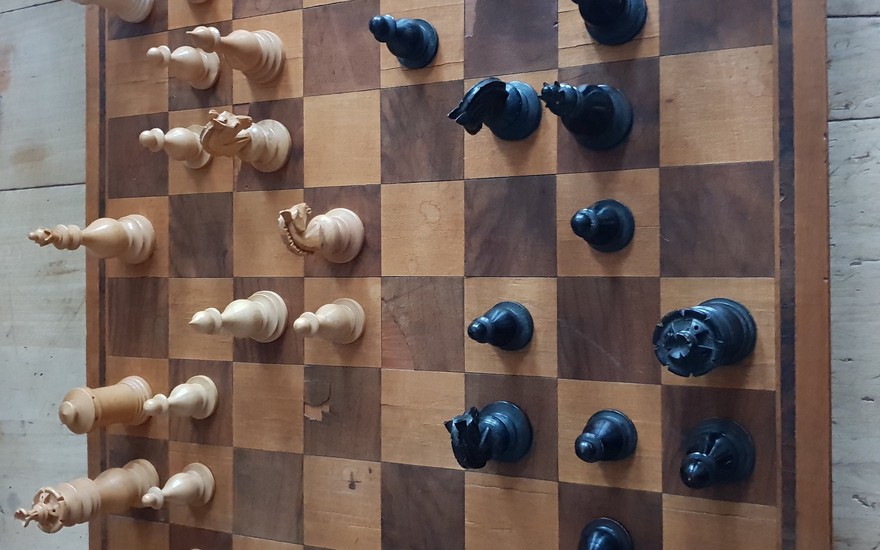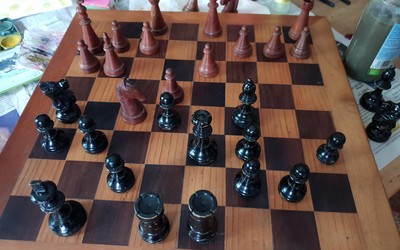
A trotting horse?
Can we get to grips with the knight move ;)How did the knight move come about?
Today, the official rules explain: The knight may move to one of the squares nearest to that on which it stands but not onthe same rank, file or diagonal.
So it seems to be a complementary affair: The knight goes, where all other pieces, which are moving diagonally, vertically and horizontally, don't. And that was true already when queen and bishop were their older egos, vizier and elephant.
What struck me, when thinking about the knight move, in a 3d-chess- not over the board but in an 8x8x8 grid in a cube- was that a knight, somewhere central in that cube, could be surrounded by 26 pieces in the 26 little cubicles bordering on its own cubicle, and still have all its knight moves available.
But while on a chess board, you can resort to the thought that a knight that is surrounded by 8 pieces on the 8 squares directly around him can jump up in the air and jump over these 8.. in an 8x8x8 cube, you cannot summon another dimension. To me, it shows, the knight in the cube is not at all jumping, but moving through the gaps between pieces. And the location of these gaps explain the direction of the knight move heading to a cubicle not on a straight vertical or horizontal line or a diagonal line of cubicles. Because that- verticals, horizontals, diagonals- is were (if orderly placed) the neigbouring pieces hover.
And then, our knights on our boards need not jump, either. Except for the fact that our pieces are crafted without regard to leaving regular gaps to allow the complementary knight moves par la terre.
Leave you with this paradox and a hearty 'j'adoube' ;)


